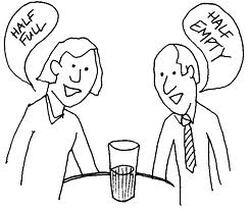 We’re going to be a little bit controversial this week, so we will understand if you don’t agree with us (by all means, tell us in the comments section). But we have given this subject a bit of thought and our reasoning is solid, we think. We are recommending that after you have published an ebook, you wait for a period before you publish a paperback (or hardback) version. We suggest waiting 4 - 6 months. This is contrary to the way mainstream publisher’s operate. They publish a hardback copy first (mainly to send to reviewers) then a paperback then, finally, the ebook. Nowadays it is common to publish all three fat the same time, but some publishers still spread the process out over 9 to 12 months. 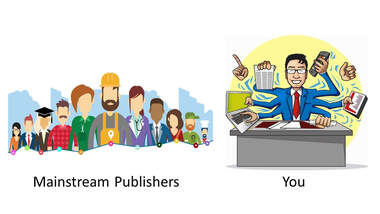 So, why are we recommending publishing the ebook first and then delaying a hard copy for up to 6 months, when mainstream publishers do the opposite? Mainstream publishers have an army of proof-readers and editors who work with the author to get it ready for publication. So, when they put out their hardcopy version, they are already confident about its narrative quality and that it is error free. Even then I’m sure we have all read books from mainstream publishers that have been error strewn. But Indie authors only have an army of one; themselves. If you want to change an ebook after publication, it is easy to do so. If you wish to change a paperback, it is much harder. OK, I’ll have to qualify that and say that some publishing platforms make it harder than others. 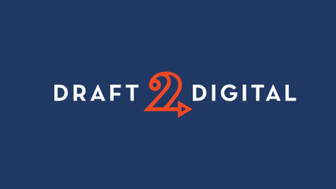 Because of the way Draft2Digital publish their paperbacks, using 3rd party printers, they don’t allow you to change the paperback content once you have approved the book for publication. You have to purchase “print change tokens” which cost $25 (about £20), which covers the cost of getting the 3rd party printer to make the changes.. So, why should this matter? Well, experience shows us that 30 seconds after you click on the “publish” button, you will spot a typo in the MS. Or, more likely, your readers will spot a typo. Secondly, once the book starts to sell you start to get reviews and if the reviews are negative you will want to do something about them. 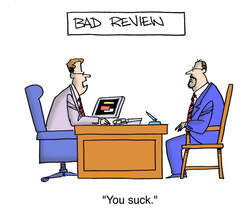 So, you need to give yourself some breathing space to correct the typos and to make changes to the MS to address the issues that have resulted in you getting the negative reviews. There is a psychological factor that will come into play as well and that may affect the sale of future books. If someone pays $5 for an ebook and they aren’t happy with it, you may get away with it. For those sorts of prices, the reader may not bother posting a review. They may even give the author a second chance and buy their next book. BUT For a $15.99 (£13.99) paperback the rules change. For that price the readers are much more likely to leave a negative review if they don’t like the book and they almost certainly won’t buy a second book by the same author. OK, in an ideal world your book will be perfect the day you publish it. You will have used the feedback from both your alpha and beta readers to improve the book. You will have formatted it properly and you will have eradicated all those pesky typos and incorrect homophones. But we don’t live in a perfect world. Some of those things will have slipped through. Even if you have paid a proof-reader to check your book (like a mainstream publisher does) some may still slip through because proof-readers have human failings too. You also may not have used alpha or beta readers, so you have no idea if your book is any good or if it can be improved. 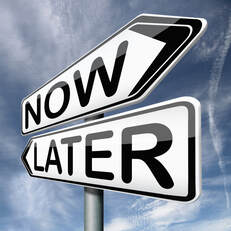 By delaying the publication of your hardcopy version, you give yourself the time to sort out the teething problems. Your ebook readers effectively become your beta readers, editors and proof-readers. As a quality strategy it isn’t one we would recommend, but we are realists and we know from experience that this is what some authors are unwittingly doing. Now, I haven’t mentioned Amazon, but that is because they are more forgiving. If you want to change your MS for the hardcopy on Amazon, you are able to do so. But, as we’ve said in other blogs, Amazon is only one sales channel, and you need to be covering all possible bases. That means that if you are going to change the MS on Amazon you will also need to change it on D2D and that is going to cost you money. 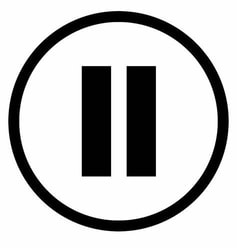 And don’t forget those psychological connections between pricing, reviews and future sales. They apply equally to books bought on Amazon. So, when you’ve published your ebook and you get that prompt that says “Do you want to start your paperback?” please resist the temptation.to say yes. Take a step back, take a deep breath and say “No, I’ll leave it for now. I’ll come back in 4 - 6 months’ time when I’ve seen if there is anything wrong with my ebook version and had time to fix it”. Finally, if you are lucky enough for your ebook sales to go stratospheric, you can always change your mind and roll out the hardcopy before the 4-6 months has elapsed. If you have enjoyed this blog, or found it informative, then make sure you don’t miss future editions. Just click on the button below to sign up for our newsletter. We’ll even send you a free ebook for doing so.
0 Comments
 Back in June of this year we blogged about the way some authors don’t engage properly on social media, so they don’t get the best results out of it. We called it “fake engagement” and there is a lot of it about. We are happy to say we now have a case study we can use to demonstrate the value of good quality social media engagement, so we can show how it is superior to fake engagement. 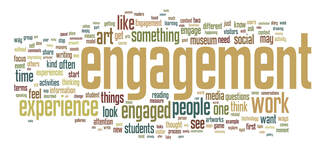 It is the basic principle of social media marketing that selling should always be secondary to engagement. If people think that all you want to do is sell them something, they will scroll past your posts. That means you spend a lot of time and effort trying to market on social media, only to get poor results. So, to our case study. A reader of our blog about fake engagement, we’ll call them Red Bus, got in contact with us to say they make regular posts to their account on X (formerly Twitter) related to the themes of their books. They are just statements of fact that Red Bus thinks readers may find interesting. The posts don’t have URLs linking them to Red Bus’s books, because that wouldn’t be engagement, that would be selling. 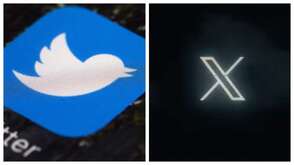 This week Red Bus got a response to one of the posts from someone we will call Maple Leaf. Red Bus responded back and a virtual conversation started up, with Maple Leaf talking about their dad’s experiences and Red Bus making contributions based on personal experience. This went on for about two hours, off and on (maybe a dozen posts each) when Red Bus had to end the conversation, as there were other things that needed doing and X is too much of a distraction. Red Bus said goodbye and thanked Maple Leaf for the chat, logged off X and thought no more about it. 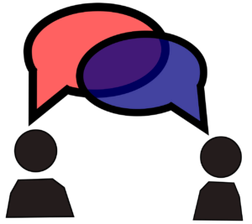 Red Bus logged back onto X the next day and found that Maple Leaf hadn’t quite terminated the conversation the previous day. Maple Leaf had asked a couple of questions about Red Bus’s books, relating to where they were available. Naturally, Red Bus replied, providing the necessary information. But Red Bus didn’t include a link to the books. That would be too pushy, Red Bus decided. Again, Red Bus didn’t think too much more about it and got on with the business of the day. Later that day Red Bus logged onto their KDP dashboard, to see that there had been a sale in the territory where Maple Leaf lived. A coincidence? Maybe. But Red Bus didn’t think so. Logging back onto X, Red Bus saw a notification from Maple Leaf, and sure enough, Maple Leaf said they had purchased one of Red Bus’s books. So, quality engagement on social media had led directly to a sale. At no point did Red Bus link to any of the places their book is sold. At no time did Red Bus suggest to Maple Leaf that Maple Leaf might like Red Bus’s books.  Maple Leaf took the decision to ask, and then took the decision to buy, without any prompting. Now, you may think that a single sale is no big deal, and you would be right – and wrong. Firstly, if Maple Leaf likes Red Bus’s book, they may buy the other books that Red Bus has written, so one sale turns into several. Secondly, if Maple Leaf likes the book(s), they may leave a review and we all know how valuable reviews are. But, most importantly, Maple Leaf may tell their family and friends about the new author they discovered on X, and suggest that the family and friends take a look for themselves. 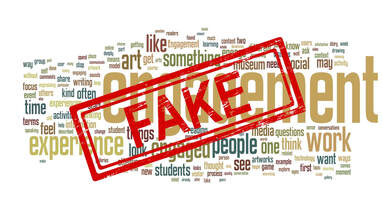 Because Maple Leaf has had a positive experience as a result of this engagement and that is so rare it may be worth mentioning to others. That is the sort of result you can get from proper engagement. It is not the sort of result you will get with posts saying “Can anyone see my posts?” It is not the sort of result you will get with posts like “Who is the best band in the world?” Or with “Should you put pineapple on pizza?” And it is certainly not the result you will get just by posting links to your books. Growing a market through social media is a painfully slow process sometimes. But if you do it right, it can pay off, as Red Bus found out this week. If you have enjoyed this blog, or found it informative, then make sure you don’t miss future editions. Just click on the button below to sign up for our newsletter. We’ll even send you a free ebook for doing so. 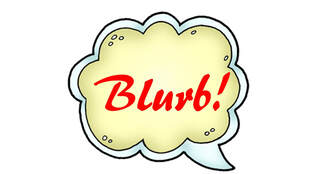 In writers’ groups on social media, authors often post drafts of their blurbs, asking for opinions. It’s a good idea, because it can gain valuable feedback. But in reading these drafts, it is quite obvious that some authors haven’t read any of the numerous blogs that have been written on the subject of blurb writing. In the vast majority of cases, the blurbs won’t sell the book because they fail to capture the interest of the reader within the first few words. Instead, they try to precis the story and what they end up with doesn’t sound interesting enough to sell the book. But experts on blurb writing often say they can write a blurb that will sell a book without even reading the book. And this is a theory we subscribe to, in broad terms, because in the blurb you aren’t telling the story, you are telling the excitement of the story.  You aren't selling the story, you are selling excitement. You aren't selling the story, you are selling excitement. Let’s take visual media (movies, TV and games) and think about how they sell their product. They never try to tell the story. They try to show the viewer/player how much enjoyment they are going to get if they watch the movie or TV show or if they play the game. Depending on the genre, you will get car chases, explosions, gunfights, people falling out of aeroplanes, zombies trying to eat people, people expressing anger, fear or love. If it’s a comedy you will get jokes, either visual or spoken. What’s the most memorable scene in the movie Dumb and Dumber? Yes, that’s right, the one where Harry (Jeff Daniels) has his tongue frozen to the street sign. Yes, that’s in the trailer! By the time a good thirty second trailer is over, people are already setting reminders on their TV, booking seats at the cinema or they are downloading the game. The movie, TV show or game may be the worst ever, but you would never get that from the trailer. Because the trailer looks exciting/horrific/emotional/funny, and the audience wants to see more. The blurb is a book’s trailer, so it has to work the same way.  The reaction many book blurbs get. The reaction many book blurbs get. So many book blurbs just don’t sound entertaining enough. By the end of the first paragraph the reader has already lost interest and is scrolling onto the next book in the search results – somebody else’s book! We try to follow a three paragraph structure for blurbs. If you haven't sold the book by the end of the third paragraph, you probably aren't going to sell it at all. Research has shown, however, that many readers never get past the first paragraph. So that is the crucial one. If that hooks the reader, then the other two paragraphs clinch the sale. 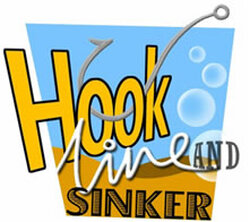 We call this approach (very unoriginally) “hook, line and sinker.” Hook gets the readers’ attention, line reels them in and sinker makes the sale. (Note for the pedants: we know that is not what a sinker does, but we don’t care about that. We just want three simple words to remind us that the blurb comes in three parts. We don’t claim that our fishing metaphor is perfect.)  But the hook is crucial. It does 80% of the work in selling the book, because if it isn’t sharp enough, the reader’s attention will already be moving onto the next book in the search results. A good hook is made up of three parts (do you see a trend emerging here?): character – conflict – consequences. Who is the character, what conflict have they become embroiled in and what are the consequences of failure? But it also has to indicate the book’s genre without wasting words by making it explicit. If you write westerns, you might use the words gunslinger, drifter or cowboy. If you write medical romances, you might mention a doctor or a nurse. These indicate the genre without having to describe the genre. The hook can be written as three sentences, or as a single sentence. That isn’t so important. The important thing is that you have less than fifty words to get those things across in an exciting manner. Yes, 50! So, no room for lots of adjectives. No room for descriptions. No room for sub plots. No room for backstory and definitely no room for “world building”. 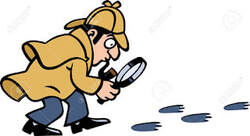 It has to be the tightest writing the author has ever done, because, if the reader’s mind starts to wander, they’ll never get them back. Here is an example: “When Private Eye Harry Jones was asked to investigate an errant husband, he had no idea it would nearly get him killed.” So, from that sentence we get genre (crime), we get the main character (Harry Jones) and we get the conflict and the consequences in the single word “killed”. To save you having to count, that was just 22 words. I didn’t need 50 and the reader will either be interested in finding out why a routine investigation nearly got Harry killed, or they won’t. I’m not trying to say that example is perfect, but it is the sort of thing blurb writers aim for as a first attempt. A 3 sentence example might be “A private investigator. An errant husband. A deadly assignment.” We still have the character, but without using his name. We still have the genre. We still have the conflict and the consequences. Some genres lend themselves to that approach better than others. I probably wouldn’t use the 3 sentence structure for a romance (though that doesn’t mean it can’t be used). 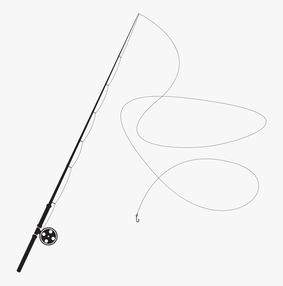 The second paragraph, which we call “line”, expands on the first to provide it with context. There are a few rules, mainly “don’ts”. 1. Don’t include other characters, focus on the protagonist (or MC if you prefer). 2. Don’t include sub-plots – stick to the main plot throughout. 3. Don’t get into world building, locations or time periods. If the book is set in a specific time period, use a generic term, eg Regency, medieval etc, or just refer to a century. 4. Don’t include backstory. It loses the focus of the blurb. 5. Do ramp up the conflict and the jeopardy. Continuing from our example hook, above, we might develop the line as follows: “When Harry Jones is asked to find out if a client’s husband is having an affair, it leads him into the seedy world of drugs and prostitution. He stumbles on the daughter of an old friend, enslaved to a drug gang. Desperate to help the girl, Harry takes on the gang's boss to set her free.” We can now clearly see the conflict that Harry has to deal with, without using a lot of unnecessary words. At the same time, we introduce a victim that needs help (the girl) and a villain (the gang's boss). 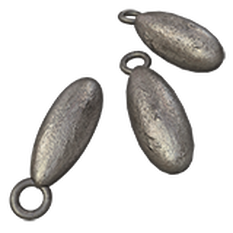 The sinker. The sinker. All that needs to happen now is for the levels of danger to be ramped up so high that the reader has no choice but to buy the book to find out what happens. That is the job of the “sinker” paragraph: “In order to rescue the trapped girl, Harry fights not only the drug gang, but also his own fears. Old memories return to haunt him, paralysing him with indecision. Can he overcome his past and get to the girl before she is killed, or must he watch his friend’s daughter die? Finishing on a question leaves the reader wanting to know the answer. And to find out the answer, they have to buy the book. Yes, it is manipulation, but all marketing is manipulation of some sort.  Different genres use different types of wording. Romance blurbs use phrases like “torn apart by fate” or “star-crossed lovers” or “mutual dislike”. But whatever wording is used, the blurb has to show that the possibility of an unhappy ending is real, so that the reader will want to know the final outcome. The final message we must give you is that the hero must always have control over their actions. They must never be coerced into involvement. So phrases such as “Harry must fight…” or “Harry has to overcome…” are a no-no because they make it look like Harry has no say in the matter. Instead, phrases such as “Harry fights …” or “Harry overcomes…” take out the element of coercion and leave Harry as a hero.  This is because heroes do the right thing because it is the right thing to do, not because they have been made to do it by some outside agency. This is a pretty safe rule when writing a novel anyway. The hero is the hero because they don’t walk away, even though they could. It's is a tough thing to do with some professions. Police, military, firefighters etc have to obey orders, so what we are talking about in a blurb has to be the character going above and beyond the call of duty. Yes it’s the cop’s job to catch the killer, but it isn’t their job to dangle from a ledge a hundred feet up while they do it.  Here’s a free offer for you. If you want to try out your ideas for your blurb, email it across to us at the address on our “contacts” page, we’d be happy to provide you with a bit of feedback, free of charge. Of course, if you’d like to browse our books catalogue while you’re waiting, we’d be delighted. You’ll find some stuff to read on our “free stuff” page. Pull up a seat, pour yourself a cup of coffee and we’ll get back to you as quickly as we can. If you have enjoyed this blog, or found it informative, then make sure you don’t miss future editions. Just click on the button below to sign up for our newsletter. We’ll even send you a free ebook for doing so. 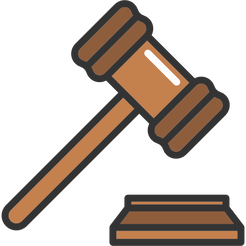 People talk a lot about the law of averages. By this they mean that if they do something enough times, there must be enough positive outcomes to balance out all the negative outcomes, to restore an average outcome at some imaginary point. This is a fallacy. It is also flawed thinking. Except in purely mathematical terms, there is no “law of averages”. For some things there are only ever negative outcomes or positive outcomes. There is no celestial balancing act between the two. The sheer number of variables in so many of life’s occurrences mean that no “average” could ever be achieved, because each one is essentially unique. People confuse the laws of statistical probability with the law of averages. 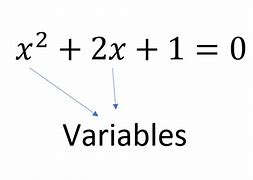 Statistical probability relies on things not changing between one occurrence and the next. If you toss a coin 100 times, for example, it should come down heads 50 times and tails 50 times. The amount of force used varies from coin toss to coin toss but, statistically there are only two possible outcomes, so the probability of one outcome vs the other is 50:50. But in most of life's occurrences, there are too many variables for statistical probability to give you a 50:50 outcome. In any occurrence the number of variables is sometimes so great that the number of possible outcomes is mind bogglingly large and there is no guarantee that any of those outcomes is going to be a positive one. 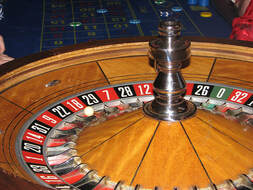 Gamblers work on a different fallacy with regard to "the law of averages". They believe that if something hasn’t happened for a while, (like the little white ball landing on certain number on a roulette wheel), then, by the “law of averages” it must happen very soon. However, where the ball lands on a roulette wheel is random (if the wheel isn’t rigged). The ball can just as easily land on the same number twice in succession as it can land on a number that it hasn’t landed on in a while. The ball hasn’t any will, so it can’t choose where it lands. The ball also has no memory, so it doesn’t know where it has landed and where it hasn’t (the same applies to lottery numbers). But the speed of the wheel, the way the croupier places the ball onto the wheel, and the point at which it is placed, are all variable, making each turn of the wheel unique.  Similarly, if a racehorse hasn’t won a race in a while, there is no reason to suppose it will win its next race. It isn’t winning races because it isn’t as fast as the other horses. It is not suddenly going to get faster, nor are the other horses suddenly going to get slower, just to satisfy some non-existent “law of averages”. A change of jockey or a change in trainer may result in the horse winning a race, but that has nothing to do with the “law of averages” because something has changed, therefore changing the likelihood of the outcome. It is the change that made the difference. Let me give you an extreme example. If you stick your hand in a fire, it will get burnt. That is a negative outcome. But there is no positive outcome. You cannot ask 100 people to stick their hand in a fire and get a negative outcome in the belief that the 101st person to do it won't get their hand burnt in order to satisfy the “law of averages”. I’ll give you another example, this time less extreme. 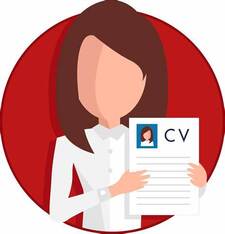 If a job applicant sends out their CV (resumé for our American readers) to 100 companies and gets no response, sending it out to another 100 companies does not mean that there will be a company that will decide to take a chance on the applicant, just so the “law of averages” can be balanced out by a good outcome. If a CV has been rejected 100 times, there must be something wrong with it because 100 companies are not going to reject a good candidate for a job. And so we get to the nub of this week’s blog. 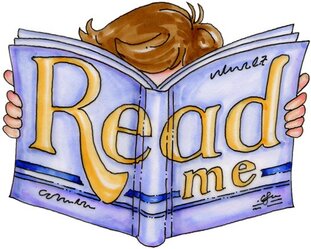 When it comes to querying a book, there is also no law of averages. OK, not every agent that the MS is sent to will be the right agent for that book. A bit of research can eliminate those before the query is even sent. Also, some agents may not really be looking for new authors, so they will reject the MS and other agents may not read the submission properly and so will reject it because they didn’t “get it”. There may be other reasons why some agents reject an MS which have nothing to do with their literary merits. Who knows? But sending a query out time after time and getting the same result doesn’t mean that the law of averages says that on the next attempt you will hit the target with the right agent. If you get past a certain (unspecified) number of rejections, then it probably means that no one likes your MS and the time has come to stop sending out queries and start reviewing your MS to find out what is wrong with it. or to review your options for getting your book published. Or both. In other words, it’s not them, it’s you (or, rather, it’s your MS).  We see a lot of posts on social media with people saying they’ve sent out their MS again to another hundred agents, or direct to publishers, and this time they’re hoping for better results. If you have made over 20 queries the chance of finding an agent is actually getting smaller, not bigger because there is no law of averages. There is only an MS that agents/publishers like or one that they don’t like enough to take a chance with. Don’t take that number of 20 as being some sort of empirical threshold. It just feels about right to us. Maybe it’s 25, maybe 30, but we doubt that it’s much higher. Einstein defined insanity as doing the same thing over and over again and expecting different outcomes each time. He knew there was no such thing as a “law of averages”. So, are you displaying that sign of insanity? 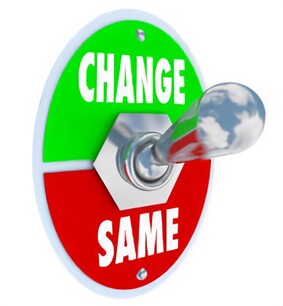 In the world self-publishing this maxim also applies. If you have tried the same things time after time to sell your book and sales haven’t improved, there is only one of two conclusions you can draw. Your approach to marketing is wrong, or the book isn’t attracting readers for some other reason. If the marketing you are doing isn’t selling your book, then you have to try something new. If you always do what you always did, you’ll always get what you always got. If you want something different you have to do something different. And if you have tried something different and the book still isn’t selling, you have to look at the book itself and ask why readers aren’t attracted to it. Maybe it’s the cover image. Maybe it’s the blurb. Maybe it’s the “look inside” sample, or maybe it’s the reviews that have been posted. Maybe it’s something else entirely. But the thing it won’t be is the law of averages. If you have enjoyed this blog, or found it informative, then make sure you don’t miss future editions. Just click on the button below to sign up for our newsletter. We’ll even send you a free ebook for doing so. 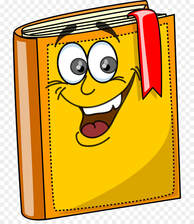 We see a lot of discussion on social media about which is best – traditional publishing (which we will abbreviate as TP) and self-publishing (abbreviated as SP). Within self-publishing we include small publishers such as ourselves, because we use most of the same channels for distribution and marketing as SP authors. We also see a lot of newbie authors asking whether they should go TP or SP before they have even written their book. We’ll circle back to that one later in the blog. The problem is that neither one nor the other is better in terms of choice. It may come as a surprise to budding authors, but you don’t get to make the choice. It may be your ambition to become a TP author, but agents and TP companies actually make the decision. Which means it’s their choice, not yours. All you can do is choose to try to become TP or choose not to bother but to go the SP route straight away.  Our advice would be always to try TP first. The reasons are quite obvious, but we’ll lay them out for you: 1. Access to wider distribution channels, especially major high street retailers. 2. Access to wider markets, such as overseas territories. 3. Professional support, especially editing and proofreading, but also cover design, blurb writing, translators etc. 4. Large marketing budget. 5. Marketing professionals selling your book for you. 6. Reputation and credibility (SP authors are often not regarded as “real” authors). To turn your back on all that would be foolish, so it is worth giving TP your best shot. But let’s do a reality check. 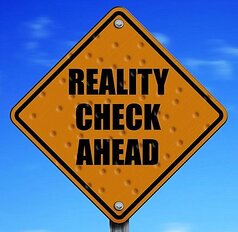 In the UK there are probably in excess of 50,000 working authors who haven’t got a TP contract already. That is a conservative estimate. The actual figures could be much higher because many aspiring authors don’t announce what they are doing. In the USA that figure is probably ten times as high. In the UK there are 9 big name publishing companies (by value of sales*) with an alliance of smaller publishers taking up the number 10 slot. In the American top 10 some of the same names also appear, along with some purely domestic publishers.  Each of those top 10 UK publishers will sign perhaps 100 new authors a year, 1,000 in total. So, that gives a 49 to 1 chance of any of those 50,000 authors getting a publishing contract. I wouldn’t bet on a horse at those odds and, remember, that’s a conservative estimate. There are a number of smaller publishers who deal in niche genres or markets, but they take on far fewer new authors each year, so they don’t really feature in our calculations. So, in the UK, for every 50 authors working today only 1 is likely to get a TP contract. That doesn’t mean you shouldn’t try. It just means you have to prepare yourself for rejection. And even if you do get a TP contract, you will probably receive a lot of rejections along the way so, again, you have to be prepared for them. 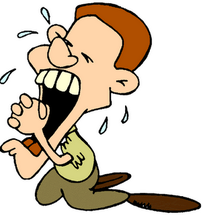 An author who finds an agent or publisher with their very first query us as rare as a unicorn. Querying a book is brutal. We know, because everyone employed by our company has tried it at some time. That leaves 49 authors out of 50 to go the SP route or not bother publishing at all. I’ve already listed what you get with a TP contract, so if you go SP you have to provide all those things for yourself and that gives you two more choices. 1. Pay other people to do those things for you, or 2. Learn how to do them for yourself. We made a conscious decision not to pay people to do things we can do for ourselves. If we don’t know how to do something, we will learn how to do it. It is always going to be cheaper in the long term to learn something, because you only have to pay once. If you pay someone else, you have to pay every time you want to do it. If you plan on writing a lot of books, then the costs will mount up and every penny spent means a penny that has to be earned back in sales. At the end of this blog we’ll direct you to a resource that provides free training in some essential skills, such as writing, proofreading, editing and marketing.  Time for another reality check. If you think that writing a book is hard, then you are going to be shocked at how hard it is to market the finished work. We have posted a lot of blogs on book marketing over the years and we are still seeing the same issues being discussed on social media. This means one of two thing. Either people haven’t read our blogs on the subject (or anyone else's blogs about it), or it means newbie authors don’t realise that SP also means SM (self-marketing). It doesn’t matter which publishing website you use (KDP is one but there are several others), after you have clicked on the “publish” button, the real work is only just starting. 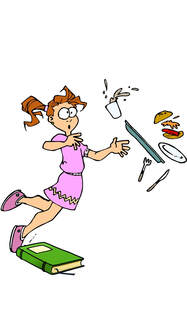 Nobody is going to stumble on your book by accident. Once your family and friends have bought a copy of your book, sales will dry up if you aren’t doing any marketing. If you have chosen the right keywords when you published the book, it will turn up in searches, but it won’t be on the first page. It may not even make it as high as the 10th page. Books that turn up on the 1st page of search results get bought, which is why paid advertising is used: it gets your book onto the first page. 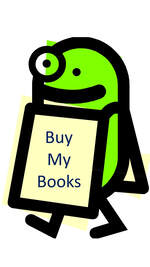 Some books that turn up on the 2nd page of results may get bought. Books that turn up on the 3rd page or more rarely sell any copies. So, you have to find the ways of getting your book in front of readers and that is what marketing is all about. And if the SP author doesn’t do the marketing, nobody else is going to do it for them unless they are paid to do it. Which is why we always recommend going the TP route first, because if you don’t try, you can never succeed. Now, I said we’d circle back to wannabe authors fretting over the best way to publish their books before they’ve even written the book. 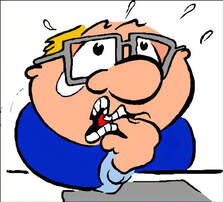 It’s very simple. If you haven’t written the book, you haven’t got anything to publish, so there is no point in fretting about whether to try TP or go straight to SP. At the very best you are wasting time that could be spent writing and, at the very worst, worrying about that sort of thing could cause writer’s block and you’ll never get your story written anyway. The time to worry about getting your book published is when you actually have a book. Not a first draft. Not a second draft. But a book that is the very best version of itself and has been tested on beta readers and then improved again based on their feedback. 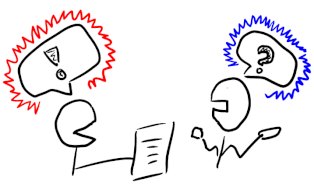 Once you have that, you can start to worry about going TP or SP and, if you are going TP, how to go about finding an agent, because very few TP companies accept direct submissions and the ones that do aren’t in the top 10. If your beta readers are telling you that the book isn’t that great, then trying to go either route probably isn’t worth your while. Sadly, not everyone who wants to be an author has to the talent to become one. But that doesn’t apply to you, of course. And, finally, just to clear something up. If you have written a book you are a real author. Being an author doesn’t depend on how your book is published. There is a growing list of SP authors who make 7 digit incomes from their books, which some TP authors (aka “real” authors) will never make. As an SP author there is nothing stopping you from joining that list, except for yourself. For access to free training in a range of publishing skills, try FutureLearn * The largest TP company in the UK top 10 is Penguin Random House (£409 million), the smallest is John Wiley and Sons (£28 million). If you have enjoyed this blog, or found it informative, then make sure you don’t miss future editions. Just click on the button below to sign up for our newsletter. We’ll even send you a free ebook for doing so. 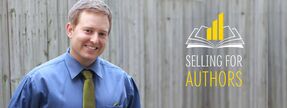 Bryan Cohen of "Selling For Authors". Bryan Cohen of "Selling For Authors". I watched a very interesting webinar recently, about using keywords to improve sales on Amazon (and other retailing websites). I can’t provide a link to it, because it expired on 2nd July, but it was created by Bryan Cohen, owner of the Selling For Authors website. Bryan provides training for authors who need help marketing their books and he has also published a number of books on the subject, some of which have been reviewed on this blog page. We’re big fans of Bryan because he has helped us to increase our sales. So, with the webinar no longer being available, we thought we would tell you about some of the things we learnt from it.  Basically, the webinar was about “Search Engine Optimisation”, aka SEO. But rather than being about using SEO techniques to help people find your website (you may not even have one), it is about helping readers to find your books on whichever websites you sell them. Although I will be talking almost exclusively about KDP and Amazon, the same techniques can be used for whichever websites you use to publish and sell your books. The secret is keywords. Those are the seven words you are able to input into the metadata for your book when you upload it onto KDP. 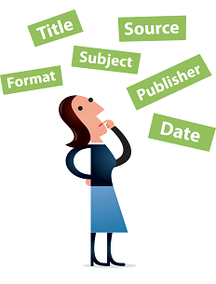 Metadata, if you are unfamiliar with the term, is the stuff you enter in the first part of the KDP process: Book title, author name, blurb, etc. That is all copied across to other versions of the book, such as paperbacks and some of it also appears on the Amazon sales page. But from the point of view of this blog, I’ll be talking about keywords and subtitles which are a very important part of the metadata.. Now, I’ve already said KDP allows you to enter 7 key words for your book. That is misleading, because you can actually enter whole phrases. If you enter 7 phrases of five words each, that’s 35 words you actually use. The critical thing is, the closer you can match those phrases to the ones people use when they search for books on-line, the higher your book will appear in the search results. 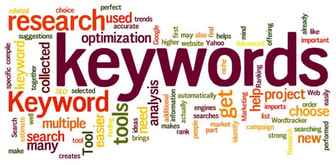 If you use a generic term in your keywords, such as Sci-fi, then it generates thousands of results, and your book will be hidden away in amongst all the others. But if you get an exact match on a longer phrase, the only books that will appear higher in the results are those which have been “sponsored” (paid for adverts) and other books with keywords that are an exact match for the same search term. A book that hasn’t sold a copy since Adam was a lad can appear on the first page of the search results if the right keywords have been used. And experience shows that a book that appears on the first page of search results has a far higher chance of being purchased than one that appears on the subsequent pages. Bryan advises us that there is a process for finding the right keyword phrases to use. Trying to short-cut that process is likely to give disappointing results, so you are advised to set some time aside for this activity. 2 to 3 hours should be enough for a single book. 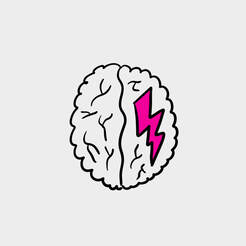 If you can’t spare 3 hours out of your busy schedule to sell your books, then you will never sell any books. The first thing to do is to think what your book is actually about in the simplest terms. This is not about writing a synopsis or even a back cover blurb. This is about finding a few words that describe it in the most basic form. So, let’s say your book's genre is sci-fi.
Having decided what sort of book you have written, you now need to brainstorm some phrases that might be put into a search bar by someone who is looking for books like yours, eg Sci-fi set in space but including time travel. Why do you need more than one phrase? Because this isn’t an exact science. We don’t yet know which words are going to provide the best results, so we are indulging in trial and error. This is why you need to set time aside to do this.  The next step is to try the phrases out in Amazon’s search bar to see what sort of results they generate. Use “incognito browsing” for this, so Amazon doesn’t show you your own books, because you are looking to see what results are produced for successful books (I’ll define successful a bit better in a moment). Having entered your first phrase, take a look at the results. Ignore the ones that have been sponsored and also ignore any books that are being offered for free, because you don’t know if they are popular because readers like them or because the readers just want a free book. Click on the book that is highest in the results (after excluding sponsored and free) and read the blurb. Is it like yours in basic terms? If no, then the phrase you have used isn’t producing the correct results and you can discard it. If yes, you can now scroll down to the book’s details and look at the sales rankings. This is where you consider if the book is successful or not. 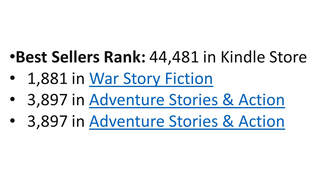 If the book’s overall sales ranking is better than 50,000 it is probably selling reasonably well. But also look at its rankings within its categories. If they are looking pretty good (better than 5,000), then that confirms your initial feelings. But are they the same categories that you have selected for your book? Because that is an important factor too. If they aren’t you can change your categories in KDP later, because if their book is selling well in those categories, yours have a good chance too if they are similar. Don’t bother with books that have a sales ranking worse than 500,000. They aren’t selling enough copies, which means that the keywords you used aren’t going to sell you many books because the results aren’t producing what the readers are looking for. Also don’t try to compete with the books that are at the top of the rankings. They are probably being written by well-known authors, which means you stand little chance of your book being selected as the one to buy. You are looking for the “mid-range” results that will sell you around 10 copies a day. If you get momentum from that you will climb the sales rankings naturally and you may end up competing with the bestselling authors that way, which is a happy place to be. 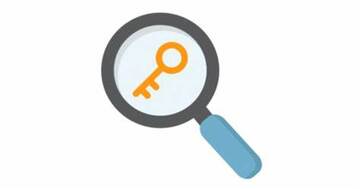 Repeat this process until you have 2 or 3 phrases that are producing the sorts of search results you were hoping for. Now go to KDP and enter those phrases into the keyword boxes, replacing any keywords that you feel probably aren’t working for you. If you use “Publisher Rocket” (we do) these will be easier to identify. Finally, the hardest part of all – be patient. If you have chosen the right keywords, sales will come, and they will be better than the sales you have had before. If you don’t have the success you expected after about a month, then repeat the process, generating new phrases to try. Don’t try to change all 7 keywords in one go. You won’t know which ones are working and which aren’t, and you may delete keywords that were selling you a few books before you tried this. If your sales are worse than they were before you started then not only are your new phrases not working for you, but you may have deleted useful keywords and you need to reinstate them.  Now, before we go on to talk about subtitles, just a word about the section of the metadata that asks you if the book contains “adult” content. Amazon isn’t too clear on what adult content is and what it isn’t. Accordingly, Bryan Cohen advises that you click on “no” for that question. If you write books that are erotic, contain a lot of extreme violence or lots of strong swear words, then maybe you should click the “yes” option. But otherwise, your books may end up in the adults only dungeon (Bryan’s words) and not be seen by a lot of potential readers. Ask yourself this: “Would I be happy with my 14 year old child reading this book?” If the answer is yes, then no harm will come from clicking the “no” button as children below that age tend not to buy books, their parents do the buying so let them make the decision. Now, subtitles. 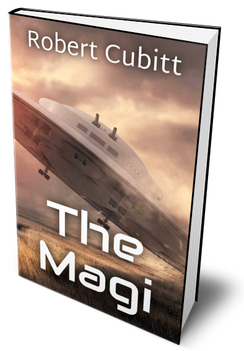 We hadn’t thought about these too much in the past and hardly ever use them, but it turns out we should have. Using a subtitle allows you to have an 8th keyword phrase in your metadata that Amazon can find when people do searches. Naturally, as the subtitle appears on the book’s sales page it needs to be grammatically correct, but it can be used to provide guidance to the reader about the book’s content, which may not be apparent from the title. For example, one of our sci-fi titles is called “The Magi”. For some readers that could be interpreted (despite the cover showing an image of a spaceship) as being a book about the Three Wise Men who visited Jesus in Bethlehem. But by adding a subtitle that says “A sci-fi action adventure” we are describing the book in a way that can’t be misinterpreted. Subtitles like that can be used for any book written in any genre. Again, using trial and error, generate some potential subtitles and put them into Amazon’s search bar and see what results they produce. If they give you a list of books that use the same or similar subtitle, which the blurb tells you are the same sort of books that you write and which have reasonable sales rankings, then you are onto a winner. If your books have been organised into a series on KDP, as they should be if they are a series, then don’t use the series title in your subtitle. That will appear in search results if a reader uses the series title as a search term. The series title appears on the sales page anyway so you will be duplicating the wording and that looks amateurish. You don’t have to include your subtitle on your book cover. If you use KDP’s cover creator, it will pull the subtitle through from the metadata if there has been no previous cover created, but you can delete it from the cover if you want to. If you designed your own cover, you don’t have to change it to include the subtitle. Just a note about paperbacks (and hardbacks). Once these have been published you can’t go back later and add a subtitle. However, if a search throws up your ebook, then the other buying options will also be shown on the sales page so readers will see that there is a hard copy option if they want it.  I have tried to cram into less than 10 minutes of reading what Bryan took an hour to say in his webinar, but of course he went into a lot more detail. So, if you want to know more, I suggest you contact Bryan through his website. As well as selling training he also runs regular “author challenges” where he provides coaching for free, so you may care to sign up for one of those in order to expand on what we have discussed here. If you have enjoyed this blog, or found it informative, then make sure you don’t miss future editions. Just click on the button below to sign up for our newsletter. We’ll even send you a free ebook for doing so.  The laws of copyright and plagiarism don’t bother most authors very much. They know the laws exist but, because they aren’t copying the work of others, they don’t give them a second thought. However, there are two circumstances when we do have to think about that little c inside a circle, or at least the consequences of it. The first is inadvertent, or accidental plagiarism and the second is when our own work is plagiarised, or our work is stolen. Our brains retain a lot of what they take in, even when we don’t realise it. I’m sure we have all experienced the moment when we think we have met someone before, because their face seems familiar.  We are probably right, because their features have lodged themselves in our memory without us even being aware of it, however fleeting the original encounter. So it is with what we read. We may have read a book forty years ago (if we are old enough) but bits of it may appear in our conscious mind unbidden, without us knowing where they have appeared from. What may appear to be an original thought is actually something remembered from the book we read all that time ago. So, by including that thought in our book, we are inadvertently plagiarising the work of someone else. The second instance is more likely, and more serious, for most authors.  If parts of our book appear in someone else’s work, we have a right to feel aggrieved. Worse, if someone steals our whole book and publishes it under their name (or, more likely, a pseudonym), we have the right to feel very, very aggrieved. So, what do the laws of copyright say? They vary from country to country, so I can only generalise here. But all copyright laws are designed to protect the work of the originator while they are alive and for some period after their death as part of their estate. At the moment Britain is still working under EU copyright law, which protects the work of the author for 70 years after their death, or for 70 years after the death of the last surviving author of a co-authored work. So, if you co-author a book, it is protected for 70 years after the death of whichever author dies last.  Under American copyright law for work created after 1st January 1978, the work is also protected for 70 years after the death of the author or last surviving co-author. Work created prior to that date is subject to different periods of protection, depending on the law at the time the work was created. The majority of countries agree to uphold the copyright laws of other countries.. That means a British author can be sued in the UK for a breach of copyright that occurs in the USA, and vice versa, so don’t be fooled into thinking you are safe just because you break the laws in a country in which you don’t live. While that looks good on paper, not all countries agree to co-operate or turn their agreement into action  Once the copyright period has expired, the work becomes “public domain”. This doesn’t mean anyone can just claim the work as their own, because that would still be plagiarism. But it does mean that anyone can publish the work under the original author’s name and not have to pay anything to the deceased’s estate. Authors often use photographs or artwork to illustrate their books, or their book covers, and those images may be (probably are) subject to copyright. If you didn’t create the art or take the photograph, then you haven’t got permission to use it. You must obtain the permission of the originator or purchase a licence to use it. Companies like Shutterstock and Depositphotos sell licenses to use the work of the people who created the images that are displayed on their websites. If you get your images from some other sources you may have to dig around to find out how to obtain permission to use them or to buy a licence. Incidentally, licences to use images are usually limited to a maximum number of hard copies, so make sure you know what the limit is so that you don’t accidently exceed it. Renewing the licence for more copies is usually cheaper than the original cost.  It is very easy to breach the copyright for images without realising you are doing it. Let me illustrate (bad pun) by using an example. Let’s imagine that I want to illustrate this blog with an image of the Mona Lisa. Now, Leonardo da Vinci has been dead for several centuries, so his best known work is clearly public domain. However, any photograph of the Mona Lisa may be subject to copyright. Given the “70 years after death” rule, it could mean a photo taken as early as 1923 (possibly even earlier) is still under copyright, if the photographer died after 1953. Photos held in archives or printed in newspapers and magazines are always subject copyright and companies like Getty Images buy the copyright for photographs in private collections and make money by selling licences to use them. Many a blogger and/or author has fallen foul of the law because they didn’t realise any of that. 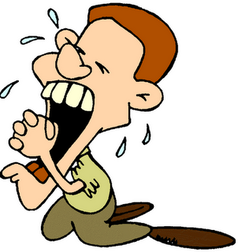 So, what happens if you commit an inadvertent act of plagiarism? Well, once you have read the work you are alleged to have plagiarised and confirmed that your story is so similar to it that it isn’t really your story, then a profuse and sincere apology and the withdrawal of the book from sale is usually enough to satisfy the original author. That doesn’t prevent the original author from taking legal action, but the fuss and cost involved usually means that they won’t involve the courts. However, in the UK if you deny that your work is based on theirs, they can take you to a Copyright Tribunal (see more below), which costs only £50. Dan Brown has been sued three times over accusations of plagiarism in his Robert Langdon novels, though none of the suits against him have been won. But some American lawyers are getting very rich from these lawsuits. If you were to lose a lawsuit, it could cost you everything you have – and I do mean everything.  However, even if you admit your mistake and avoid a lawsuit, your publisher will have suffered a financial loss as a result, so they may (probably will) reclaim any advance of royalties that was paid and also claim back any costs they incurred in publishing your book. You may end up severely financially damaged anyway even if you admit your error. So, when you have that great thought for your book, do make sure that it is an original thought and not a memory of someone else’s work, resurrected from the deepest recesses of your brain. What to do about someone plagiarising or actually stealing your work is more complex. Let’s take plagiarism to start with. Most authors can’t afford to take legal action, so they need to take a diplomatic approach first. 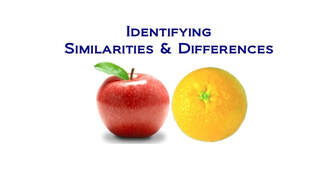 The first step is to “compare and contrast” the two books. Ideas can’t be copyrighted, so the fact that you had the idea to locate your story on a planet a thousand light years from Earth, which is populated by Green Pixies, and the other author did the same, is not proof of plagiarism. You have to be able to prove that the story is substantially the same as yours throughout. That means going chapter by chapter and identifying the similarities – and the differences. The greater the ratio of similarities to differences, the stronger your case, and vice versa. You also have to be able to prove that your book was copyrighted and published before the other version, which is why having a copyright date included in your book is so important. If the book has been published by more than one publisher, which sometimes happens, then it is the first publication date that is the important one, not the latest date. Because of the time it takes to write and then publish a book, the publication date could be years after the copyright date.. The next thing to do is to try to contact the author, point out the similarities with your work and ask them, politely, to withdraw the book. You shouldn’t accuse them of plagiarism, because that could provoke a counteraccusation of slander. 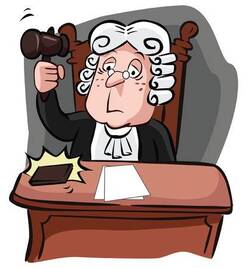 In the UK the Copyright Tribunal will examine cases of copyright theft and plagiarism. Contact them before you do anything more. Present them with all your evidence. Their email address is c[email protected] Other countries may operate similar forms of copyright dispute resolution, so check your own government’s websites. We’ll assume that the tribunal has found in your favour, so if the other author denies the similarities or refuses to remove the book despite the tribunal’s ruling, then a solicitor’s (lawyer’s) letter will usually do the trick. The threat of legal action, backed by the tribunal’s findings and with the accompanying financial consequences, is usually enough to make the other party see sense. A solicitor’s letter can cost anything from £30 (plus VAT) upwards, depending on how much time the solicitor has to spend on it. Ask the solicitor how much they expect the cost to be before you commit yourself.  However, if the letter fails to achieve the desired result, don’t go to court just yet. Instead, contact the retailers (this could be quite a few businesses) and ask for the book to be removed from sale. If the Copyright Tribunal has found in your favour you will have a strong case. If they didn’t, the retailers may decide to do their own investigations before removing the title from sale. If the retailers don’t agree with you, you have a choice: take the risk of legal action or just suck it up and let it go. If you have deep pockets you may decide to stand on your principles and go to court, but for most authors the consequences of losing are too high.  What about the direct theft of your work by someone who has published it under another name? Well, it is unlikely that you will ever be able to track the thief down. They know they have broken the law, so they will have done their best to conceal their identity. Copyright theft is a “civil” offence, not a criminal one, so the police won’t get involved. Tracking the thief down yourself isn’t really an option. You simply don’t have the resources necessary. Even if you make progress, the trail will probably end in a country that isn’t very good at co-operating on international law and you are entering the lottery of a legal system with which you are unfamiliar, and which may be unsympathetic to your case. If you have used the Copyright Tribunal, mentioned earlier in the blog, their adjudication can be used to require retailers to remove the offending books. The publisher (if you have one) or retailer(s) may decide to pursue the thief because of their financial losses, but that is unlikely. 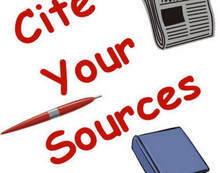 There is one more word of caution I must offer. It is quite common to quote the work of other people in your otherwise original work. There are circumstances when you may do that, providing it is properly credited, but these mainly relate to non-fiction and academic works. You may also do that if you are critiquing the work, reviewing it or using it for the purposes of parody or sarcasm. The relevant clauses in the law are known as “fair use” or “fair dealing”. The rule is to keep the quotes as short as is necessary to get the message across and to make sure you credit the originator. Just naming the originator may not be enough, you may have to provide a full reference to the publication, date of publication, publisher etc. This website provides guidance on how to cite your sources. 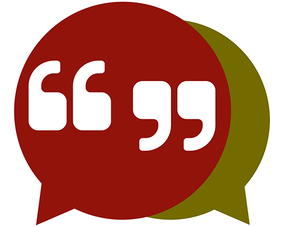 It is quite common to see quotes of the lyrics of songs or lines of poetry at the start of a book or at the beginning of chapters, as they usually convey some message that is relevant to the story. You must obtain the consent of the originator of the words if you wish to use them in that way. Some poets, authors and songwriters will give that freely, but many require payment. The music industry is particularly litigious when it comes to the use of song lyrics without permission. If you plan to use quotes like that and don’t ask permission, you do so at considerable financial risk. At the very least you will probably have to delete the offending words from the book and re-publish it without them. So, that brings us to the end of our quick gallop through the world of plagiarism and copyright law. We hope you found it interesting and now have a better idea of what you can and can’t do. However, I include links to more authoritative sources if you want to know (yawn) more. For the UK: https://www.legislation.gov.uk/ukpga/1988/48/contents For the USA: https://www.copyright.gov/title17/ If you have enjoyed this blog, or found it informative, then make sure you don’t miss future editions. Just click on the button below to sign up for our newsletter. We’ll even send you a free ebook for doing so. 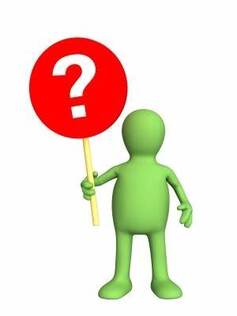 Why aren’t my books selling? It’s a question that we hear many authors asking, especially on Twitter (Good old Twitter – we’d be stuck for blog ideas without it it). Well, first some expectation management. There are a thousand reasons why a book might not be selling, so it is impossible to answer that question for any individual book in a simple blog. All we can do is look at some generalities and let you compare and contrast those with your book and your marketing to see what conclusions you can draw. But those generalities are important, as they may point you towards the single reason your book may not be selling. You will have to identify and address the precise issue, but at least you will be closer to the right answer than you would be if you hadn’t read this blog. 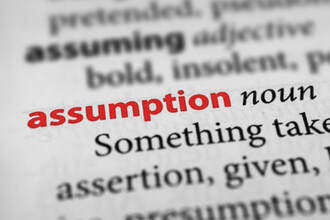 We are going to start with two assumptions. We will be discussing marketing later in the blog, but our starting point assumes that you have done some marketing, which has led to a potential reader finding their way to the Amazon page for your book. If you don’t sell through Amazon (Why not? They account for 80% of ebook sales!) then the same basic messages apply to other on-line book selling sites. The second assumption (and it is the big one) is that your book is actually up to the required quality. Your Beta readers will have told you that. Sadly, your family and friends probably won’t tell you if it wasn’t, because they don’t want to hurt your feelings. If you haven’t used Beta readers, or you haven’t acted on Beta reader feedback, you are entering a lottery and nothing we can say will change that. You may find it helpful to have your Amazon (or whatever) sales page open in another tab, so you can flip between it and this blog to see what we are talking about. So, what is the first thing a potential reader will see when they click on a link to take them to your book’s sales page? Cover image 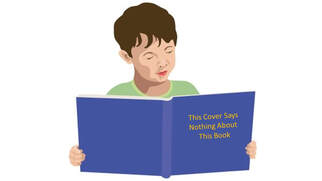 We blogged about cover design just a couple of weeks ago, so we aren’t going to go over that ground again. I think it is safe to say that if your book showed up in someone’s search results, they must have found the cover appealing enough to click on the link or they wouldn't be looking at the book's sales page. But what if they didn’t click on the link? If you have been running an advert for your book, you will have data from the results to tell you how many clicks you got (a 10% conversions rate is good). If you aren’t getting enough clicks, your cover design may be part of the problem. But if you haven’t run any ads, you won’t know. You may want to scroll down and read that blog about cover designs, just in case. 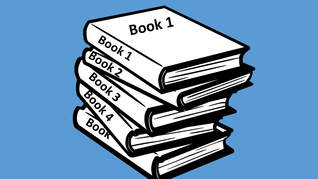 Title A lot has been written about titles, with many gurus suggesting titles should be short. All we can say is that “Dune” was a best seller and so was “The Curious Incident Of The Dog In The Nighttime”. You can draw your own conclusions with regard to the impact of title length on sales. We don’t think it is a critical factor unless you have used words that might alientate the reader. Price I’ve said it before, but I’ll say it again, if you aren’t J K Rowling, you can’t charge J K Rowling prices for your books. The ability to set their own price is one of the few competitive advantages that the Indie author has, so they need to use it. “I’m not going to under-sell my talent.” is an objection that is often raised when I say that.  OK, here are the facts. A mainstream published author only gets about 10% of the royalties from each sale. So, for a 9.99 ebook (forgive the lack of currency, it just saves me having to provide $, £ and other conversions), the author will only get about 1. But for a 5.99 ebook an Indie author will get between 1.75 and 3.50 (approx) depending on whether they took the 35% or the 70% royalty option. So, who is underselling their talent? The mainstream published author makes their money not from individual sales, but from total volume of sales. That is as much about having a big marketing budget as it is about having talent. Even some pretty bad writers (naming no names) can sell a lot of books if they have a big enough marketing budget behind them. You, on the other hand, aren’t making any sales, so no one knows about your talent and, if you insist on charging 9.99 for your books, they may never know about it. I’m actually surprised that more mainstream authors don’t opt for self-publishing once they have established their name – they would make far more money. Blurb 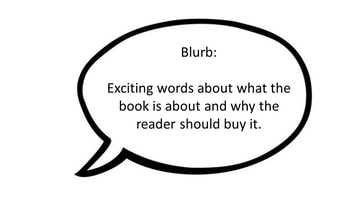 After price, this is the next crucial part of the sales page. If the reader is intrigued by the book’s blurb, they will either buy the book, or take the next step towards buying the book, which is to read the “Look Inside” portion. There are many blogs about blurb writing available, including some of our own and they all say pretty much the same thing. There are even books the subject (try Bryan Cohen’s). Google “How to write a good book blurb”, read what the blogs have to say and then make sure your own blurb is doing its job. If it isn’t, change it. “Look Inside” feature. If you have got the reader as far as looking inside the book, you are 90% of the way to making the sale. But it’s that final 10% that is the killer. If the “Look Inside” sample captures the reader’s interest, the sale is guaranteed. If it doesn’t then the reader will go and look somewhere else for their next book. 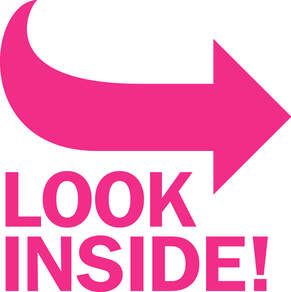 Once upon a time authors were permitted to take their time telling their story, using the opening chapters to create atmosphere and develop characters, before having to think about “inciting incidents”. Films, TV and computer games have changed all that. Nowadays you have to capture the reader’s interest within the opening few pages of the book and the “Look Inside” portion aids and abets that approach. If you fail to capture the reader’s interest, that 90% is all for nothing and you don’t make the sale. So, ask a few people, who you trust to give you an honest opinion, to read that “Look Inside” portion and then get them to tell you if they would buy the book if they didn’t know it was by you. It may still not provide a definitive answer, because they may not want to hurt your feelings, but if they are really good friends and really trustworthy, they will be honest. Reviews  If the “Look Inside” portion of your book has done its job, readers may never look at the reviews it has been given. I almost never look at reviews myself, having made my decision based on the above factors. But some people do look at reviews, which is a problem if you don’t have any. You can pay for reviews. I’m not recommending it, but it’s your money. If you want to pay, that’s your call. But the real problem is bad reviews. There are two things to be done if you have a lot of bad reviews. A good reviewer will be helpful and provide reasons why they didn’t like your book, so learn from that. The first thing to look at, therefore, is what the reviewer said and then fix the problems. But that won’t get rid of the bad reviews, so there is a second thing you may need to consider. You may wish to “unpublish” the book from Amazon and re-launch it on another self-publishing site, such as D2D. The reviews on Amazon will no longer be seen and the book will start off on the new site with a clean slate. If you are already on multiple self-publishing sites, you really are stuck. Also, if you have bad reviews on Goodreads and other review sites, there is nothing that can be done about those. You may have to unpublish the book entirely and start anew by writing a brand new book. But use those reviews to learn from your mistakes, so the new book doesn’t suffer the same fate. An author who refuses to learn from their mistakes (or even admit they made any) will never sell books. Marketing  We said at the top of the blog that we would be discussing marketing, so here we are. However, this is too vast a subject to cover in one blog. We have written more blogs on this subject than on any other and we are still only scratching the surface in many aspects of the craft. The best thing we can advise is that you undertake some free training in marketing to help you market your books effectively. Effective marketing comes from knowledge, not luck. What we can do is summarise some of the key messages we have put out about this subject in the past. 1. No one is going to stumble on your book by accident. Marketing is not a choice – it is an essential. 2. Did you put the right “keywords” in into your book’s details on KDP? The most common way for people to find new authors on Amazon (or any site) is through searches using keywords. 3. Social media was a better marketing tool in the early days but is now largely past its “sell by” date. 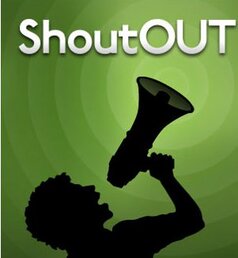 4. Blasting out Tweets to try to sell your book doesn’t work, so don’t pay people to do it. Social media users just scroll past those Tweets nowadays – or they block the username. 5. Social media is still a useful tool if you remember to use the "social" part correctly. 6. Paying for marketing services is an option – but only if you know which service is going to work for your book. You can’t cure a broken leg by taking an aspirin, so you have to know what is wrong with your marketing strategy before you pay someone to fix it, otherwise you risk trying to fix the wrong thing and throwing your money down the toilet.. 7. We’re sorry to have to be the bearers of bad news, but if you really want to sell books you are probably going to have to pay to advertise. We have found Amazon Ads and Facebook Ads to be the most cost effective. If you want to read any of those myriad blogs we have written on the subject of book marketing, you can find them in our archive. So, have you some inkling now about why your books aren’t selling? Maybe you haven’t found the final answer yet, but I hope we have shone a torch into the dark corners where you might find the final answer. If you have enjoyed this blog, or found it informative, then make sure you don’t miss future editions. Just click on the button below to sign up for our newsletter. We’ll even send you a free ebook for doing so.  Why do bookstore chains have big displays of book just inside their doors, showing the covers of the books that they are trying to sell that week? Firstly, the publishers are probably paying for the space that the display is taking up. But, more importantly, it is about the only place in a bookstore where it is possible to display the books so that the cover can be shown off. In the bookshelves themselves only the spines can be seen, with the odd book being turned “face outward” to show the front cover. Again, the publisher is probably paying to use that extra space.  There is an old saying amongst chefs that the first taste of a dish is with the eyes. Which is why chefs take so much care over the presentation of the food. It is sometimes a work of art in itself. "It LOOKS delicious." is something most of us have said in our time. And exactly the same rule applies to books. The first taste is with the eyes and the taster is the cover of the book. But instead of saying "It looks delicious" we say "It looks interesting". Cover design is something we have blogged about in the past, but we came across a book recently that reminded us of the importance of getting the cover right. Let me say up front that the book itself was excellent. It wasn’t published by us (more’s the pity), but we are happy to compliment the author on a job well done. One of our authors had been sent the book to review it, which is why he knew what it was about. We only became involved when the reviewer asked our opinion on the cover – which gave rise to this blog.  Just because a cover is artistic, it doesn't make it a good cover. Just because a cover is artistic, it doesn't make it a good cover. here was nothing wrong with the cover in artistic terms. The problem was that it didn’t say anything about the book. From the imagery it used, it wasn’t possible to know what genre the book was written in. The title didn’t tell us either. In a recent Tweet an author showed three potential covers for her latest book and asked followers which they preferred. I thought they all had a very dated, 1950s/60s, look about them and none of them excited my interest, despite the book being in a genre I read. I Tweeted back to say as much. She probably didn’t like the feedback, but better for the author to get it now than in several weeks’ time after the book has been published. The cover is the first thing a reader sees, regardless of whether it is a bookstore or on-line. The only place a cover isn’t required to make an impact is in a library, where all the books are displayed spine outwards, so only the title and the author’s name are visible. 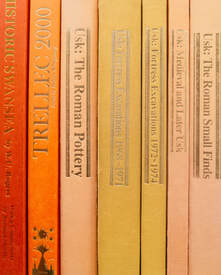 "Don't judge a book by its spine." "Don't judge a book by its spine." The quote from George Eliot (1819-1880), “Don’t judge a book by its cover” is actually a misquote. What she actually said was “Don’t judge a book by its spine”. There are pretty obvious reasons why that version is true. But readers constantly judge books by their covers. It is why publishers spend so much money on cover designs. So, the cover and the title combined must tell the reader everything they need to know about genre, so the reader knows that it is the sort of book they like to read. If that is the case, they will then read the blurb, or the “look inside” portion, or both, and the reader is well on the way to buying the book. If that initial impact isn’t made, the reader will move on to the next book on the shelf, or they will scroll on by to the next book in the search results. 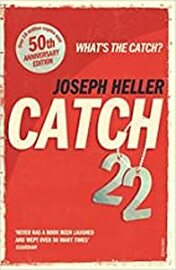 Joseph Heller's classic was already well known by the time this cover was used. Joseph Heller's classic was already well known by the time this cover was used. Authors choose their book titles for many reasons, and they don’t always say what genre the book is. From the title “Catch-22” you wouldn’t guess that the book was a satire on the way the United States Army Air Corp operated during World War II. It is more likely to suggest a book about baseball or cricket. The real genre only becomes apparent when you read the book. I’m sure that you can all think of other book titles that don’t suggest the genre of the book. Sometimes it is possible to guess because you know what sort of books are written by a particular author, but that isn’t a hard and fast rule either, because some authors write in multiple genres. But if it is an author’s first book, the reader has no idea what genre they write in. So, if the book’s title doesn’t suggest the genre and the author’s name isn’t familiar, then the book’s cover has to do a lot of work for the author if they want to capture the attention of a reader.  A lack of distinguishing features A lack of distinguishing features We went looking for other titles by the same author and, by accident, came across another problem. The book was the second in a series but the cover of the first book was so similar to that of the second that it is bound to create confusion for the reader. Our memories work far better with visual images than they do with text – and that is where the problem lay. With the exception of some minor differences in background colour, the cover of the second book was identical to the cover of the first book. The only major indication that the two books were different were the titles. Given what I have said about visual imagery taking precedence over text, readers are likely to recognise the cover image from the first book and think they have read the second book when they haven’t. If they have enjoyed the first book and would be prepared to buy the second book without knowing anything else about it, they might not buy for that reason. That’s a guaranteed sale that has been lost, because the cover caused confusion.  We can guess that the author was trying to establish a “brand identity” for the series and there is nothing wrong with that. Most authors (or publishers) of book series try to establish a brand identity for them. But readers must be able to identify individual books in a series at first glance, while also recognising the branding. The way the author (or their publisher) had done it in this case it wasn’t really possible to see that the two books were different. If a reader is asking themselves “Have I read this book before?” then they aren’t going to buy the book if they are in any doubt. They may not decide to read the book’s blurb to find out if they have read it, they may simply move on along the bookshelf or scroll through the search results and that is a lost sale. The above image of three covers from novels in Bernard Cornwell’s “Sharpe” series shows how a brand identity can be achieved, through a combination of layout, font selection and visual imagery.
I could go on about selecting the right fonts to suit the genre (the Sharpe covers provide a good example), but those sorts of refinements are secondary to the visual impact of the cover art. So, the two things we hope you will take away from this blog, if you are self-publishing your book: 1. Make sure your book cover makes it clear what genre the book is written in. 2. Make sure the reader can distinguish between successive books in a series. And if you are fortunate enough to have a publisher, make sure your publisher has addressed those two issues to your satisfaction before you sign off on the cover design. If in doubt, take some time to search through the listings of books, especially best-sellers, written in the same genre as yours to see what other authors/publishers have done with the covers. There is no shame in imitation (only in in direct copying). If you have enjoyed this blog, or found it informative, then make sure you don’t miss future editions. Just click on the button below to sign up for our newsletter. We’ll even send you a free ebook for doing so. 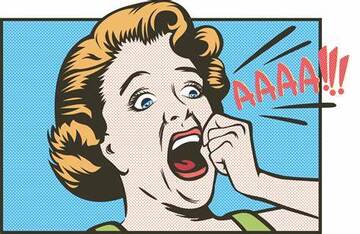 We’ve been hearing a lot about the ability of AI to write books, but is it something that indie authors really have to be frightened about? This is a difficult assessment for an author to make. We see this as something that is going to undermine our talent, so we fear it. When we fear something, we never take a positive view of it, so any assessment that we try to make isn’t going to be objective. I’m not an expert in AI, but I am an author (as well as a publisher) so I want to try to understand this issue better, so I can make an objective assessment of how big a threat AI is to our profession.  From a commercial point of view, having a computer programme write novels is an attractive prospect for publishers. Computer programmes, once paid for, don’t need to be paid again. If they can create a few books that sell well, they will have paid for themselves and after that all future books are pure profit. If the programme is producing quality product first time, every time, you also don’t have to pay editors or proof readers. With AI also capable of producing quality artwork, cover design is also something that doesn’t have to be paid for. We know that last example is true, because we use a commercially available design package to create covers from images we purchase the rights for on-line. 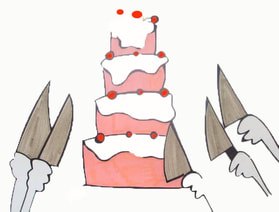 We can also be sure that there are plenty of opportunists in the world who will use AI to create books which they will then try to sell, pretending that they have created the work, even if it is poor quality Even if people don’t like the book, the “author” can repeat this trick many times over by publishing more books under different names. There are probably authors doing this already with books they really did write themselves. AI will just make it easier for them. It is possible to detect books written by AI, using the right tools. However, as AI becomes more advance it is getting harder to tell the difference between AI written work and “the real thing”. 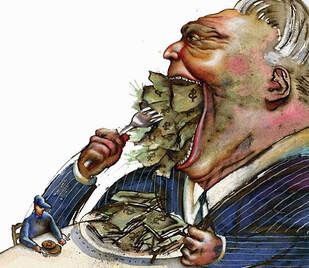 Don’t expect retailers to intervene here, because all they are interested in is their share of the sales income. We know this because of some of the rubbish that is sold on their websites currently. There is one advantage that human writers have that AI doesn’t. According to Stanford University researchers, AI doesn’t understand the purpose of books. While it can develop a plot to fit the description input by the “author”, the AI system may put in unexpected twists that means the resulting output doesn’t actually make sense in logical terms. The AI “knows” that readers like plot twists. What it doesn’t know is that the plot twist has to make logical sense. In an AI book Character A may turn out to be the murderer, but the logic behind them carrying out the murder may not make sense to us humans; it just has to make sense to the AI programme because it is a plot twist.  Where AI does help the author is in correcting grammar, punctuation, syntax etc and suggesting synonyms that the author may not have considered. That can make a poorly educated writer with good story ideas into a better writer. In other words, AI fulfils the role of a text editor. If you are a text editor reading this, you may want to consider a career change because that sort of AI is already with us and is being used. Autocorrect and Grammarly have been around for decades and they are just the tip of the AI iceberg. And there is really no way to detect that sort of AI if you haven’t seen any of the author’s uncorrected efforts. Even then it isn't always obvious to the reader. There is an area where AI is of considerable advantage and that is in content writing. Writing content for website landing pages, blogs, advertising copy etc can produce adequate work quickly and more cheaply than employing a content writer and a lack of originality isn’t a factor. If that is your profession then you, too, might want to consider your future. Where AI fails is from where it takes its input. In order to “create” a book, it analyses sources from across the world wide web and combines it together to create a story that meets the criteria for the book that the “author” has set. For example, to create a fantasy novel it will analyse existing fantasy novels of a similar type and then use the tropes and vocabulary found in those books to “create” a new novel..  This introduces the risk of plagiarism. Because the distance between “analysing” and ”copying” is a very small one in computer terms. As lawsuits in the past have proven, it only requires a few similarities in a plot for a court to find in favour of the plaintive. Dan Brown has been sued for plagiarism three times for his Robert Langdon books, though none of the lawsuits have yet been successful. But lawyers made huge amounts of money out of those cases. Q.R. Markham, a.k.a. Quentin Rowan, copied from literally hundreds of books in order to “create” his debut novel “Assassin of Secrets”, which is pretty much what AI does. The book had to be recalled by its publisher after only a week because the similarities with other novels were soon identified. Rowan had to repay his advance of $15,000 and reimburse the publisher for their costs. Are those sorts of financial risks enough to prevent AI from being used to write novels? Probably not. We know that there are all sorts of fakes and charlatans using the internet to make money and they will take the risk, hiding their identities behind dummy corporations or hiding behind countries that aren’t very co-operative with the international justice system. On-line retailers will have to take action to take down books that have been proven to plagiarise other work. However, some will wait until the courts order them to do so. In the meantime, the “author” will have launched more books under different names, which means the retailers will always be playing catch-up. Amazon are ahead of the game in some respects. They do flag work that directly quotes the work of other authors if it exceeds the “fair use” criteria. 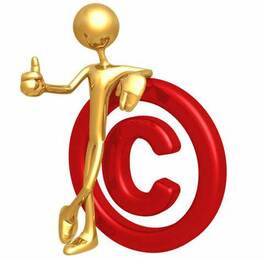 Fair use (aka fair dealing), for those who are unfamiliar with the term, is an exemption from copyright law which means that authors can use extracts of other people’s work in critiques, reviews and quotes etc. There are also further exemptions from copyright law for the purpose of parody, satire and in teaching materials, but let’s not get into those here. So, back to the original purpose of my blog: do authors have to be fearful of the ability of AI to write books? The short answer is yes. If not now, then in the near future. We know it is possible and therefore it is another form of competition in an already crowded market.  We know that it is possible to identify work written by some older versions of AI programmes. But how many readers are going to bother doing that sort of analysis if the retailer hasn’t done it for them? Quality isn’t a threshold for some readers. We already know this because some pretty poor books have become bestsellers. All we can do is maintain our own high standards of quality in the hope that readers will continue to buy our books. I think that the authors at greatest risk are those who are signed to "pulp fiction" publishers for whom quantity takes precedence over quality. If quality isn’t the overriding criteria for publication, those authors are at the greatest risk of losing their publishing contracts. But the one thing we know about computer software is that it gets better and better over time. The disadvantages that AI has at the moment will be addressed.  The illogical plot twists will be eradicated by teaching the systems what a logical plot twist looks like. The overall quality of the “writing” will be improved. The risk of plagiarism will be programmed out. So, if you are an author who is just dipping your toe in the water you shouldn’t plan on having a long career. You certainly shouldn’t be planning on making a lot of money from your work because increased competition squeezes everyone. But it is the text editors, proofreaders and cover designers who probably have the most to fear in the short term. AI can eradicate errors from documents, so there is less work for them to do and AI can design covers that are indistinguishable from human created ones.. But we at Selfishgenie promise not to publish any AI books knowingly. The trouble is, they will get harder to identify, so we may do it inadvertently, because it will be the human behind the AI written book that will sign the contract. But we will work on our “due diligence” to try to address that.  Are there any rays of hope for the Indie author when it comes to AI? I think there are. At the basic level, AI is a computer programme and therefore if you ask it to do something it will always do it the same way because it knows no other way. That is going to lead to a lot of similarity in books written by AI systems. Let me give you an example. Take the phrase “Sunlight dappled the meadow and the gentle breeze caused the heads of the wildflowers to dance.”. If I asked each of you reading this blog to input that into an AI writing system, what would come out the other end would be a lot of stories that are a variation on that theme, all of which would be very similar. If, however, I asked each of you to continue writing from that quote, without using AI, what I would get back would be lots and lots of different stories. That is because you will each interpret the quote in a different way and then you will use your creative abilities to come up with something that is original. Whereas AI draws its knowledge from what is already out there in the world. In other words, it learns from what has gone before. It doesn’t have original ideas, the way people do. If you are one of those authors who believes that readers want "more of the same" and therefore write books imitating (but not copying) other authors, then you may need to re-think your strategy, because AI can give readers that. But if you are an author who takes pride in being original, there is some hope for you because Ai isn't big on originality. The second ray of light is in marketing. AI book writing systems don’t do marketing. As Indie authors, we all know that marketing our books is very often harder than writing them. But the sort of people who will use AI to write books don’t want to do hard work. If they did, they’d be proper authors like us. Which means that they won’t want to do the marketing either and if you don’t market a book, it won’t sell. The only way to get anyone’s attention would be to sell the book for 99p so it turns up amongst the special offers, and there’s no money in that, so it wouldn’t be attractive to the person who is trying to make money by using a computer to write the books. It will take those people time to learn that, but that's their problem, not ours. The main threat here would seem to be the person who knows a lot about marketing but doesn’t know much about writing books. They would be prepared to do the marketing work required to sell an AI written book. But lazy people are no threat, with or without AI. If you have enjoyed this blog, or found it informative, then make sure you don’t miss future editions. Just click on the button below to sign up for our newsletter. We’ll even send you a free ebook for doing so. |
AuthorThis blog is compiled and curated by the Selfishgenie publishing team. Archives
March 2025
|
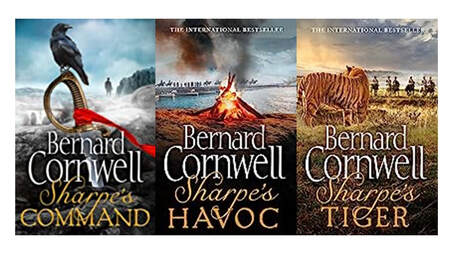
 RSS Feed
RSS Feed